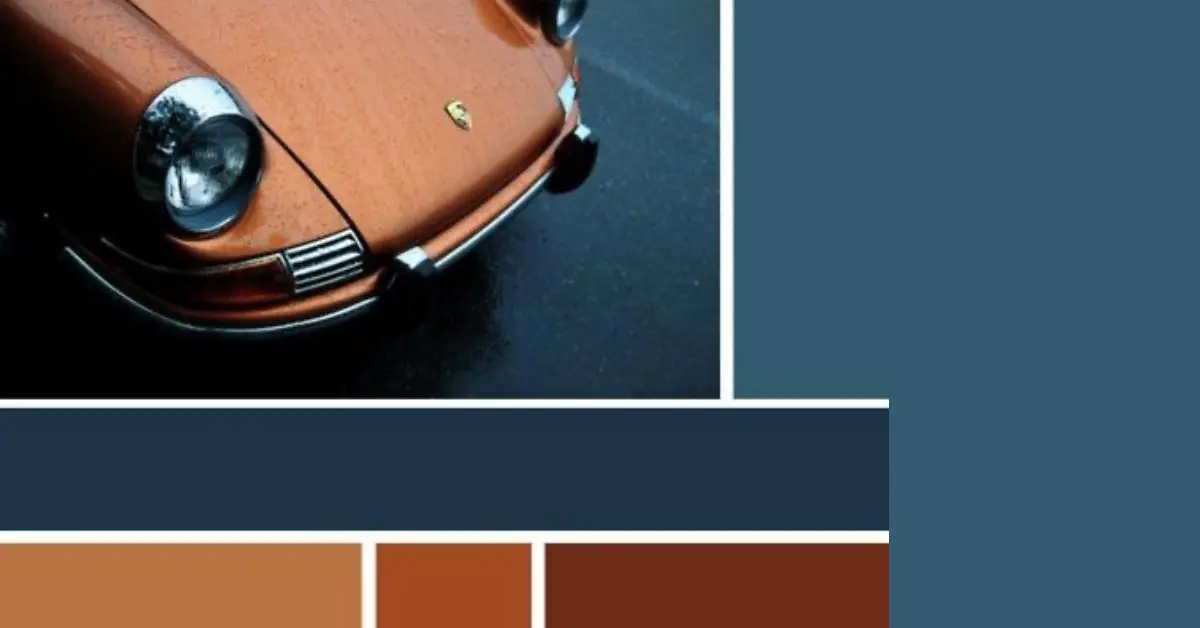Masculine shades are characterized by their strong, bold, and confident presence. They exude a sense of sophistication and authority, perfect for any man looking to make a memorable statement. Whether you’re looking to refresh your wardrobe or add some personality to your home decor, masculine colors offer a fantastic foundation.
10 Most Masculine Colors
1 Black
Black is the embodiment of boldness and sophistication. It’s a color that adds depth and character to any space. In masculine decor, black is a statement of strength and elegance, especially when contrasted with lighter hues or metallic accents. An all-black bedroom looks manly, stylish, and simply beautiful. Black is dark and minimalist without being gothic. In a predominantly black space, there’s ample scope to add vibrancy with hints of red, yellow, or any other colors you prefer.

2 Gray
Gray is a neutral shade that carries with it a sense of maturity and seriousness. This color is often seen in business suits and formal wear, symbolizing professionalism and authority. Especially, charcoal gray is the perfect blend of black’s depth and gray’s versatility. In a room, charcoal can be paired with vibrant colors like teal or mustard for a pop of color, or with softer hues for a more subdued look.

3 Rich Brown
Rich brown, like the color of aged leather or dark wood, exudes warmth and comfort. It’s a color that’s both rustic and refined, perfect for creating a cozy and inviting atmosphere. In a room, rich brown can be complemented with creams, beiges, and even deep reds for a luxurious feel.

4 Navy Blue
Navy blue is a timeless and versatile color that exudes confidence and sophistication. It’s a shade that’s deep, overpowering, and classic without being old-fashioned.
Navy is often associated with professionalism and strength, making it a top choice for many men’s wardrobes and room decors. The richness of navy blue can be complemented with lighter shades of blue, crisp whites, or even metallic accents for a touch of elegance.

5 Deep Green
Deep green, typically reminiscent of forest hues, embodies a sense of calm and connection to nature. Its color is robust and grounding, making it a favorite for those who appreciate the outdoors. Deep green pairs beautifully with wooden textures, earthy browns, and even gold accents when used in interiors. In my eyes, a perfect choice for a masculine small home office.

6 Beige
Beige exudes calmness and versatility. This neutral hue blends effortlessly with various styles, offering a warm and inviting ambiance. In masculine spaces, beige pairs well with dark woods or metallics, serving as a subtle backdrop for bolder accents.

7 White
White symbolizes purity and simplicity. It offers a clean and crisp look, making spaces feel open and airy. White can be paired with darker tones or textures in masculine settings, creating a balanced and modern aesthetic.

8 Burnt Orange
Burnt orange, with its fiery and earthy tones, is both vibrant and grounded. It’s a color that’s full of energy and warmth, reminiscent of autumn leaves or desert landscapes. In a room, burnt orange can be balanced with neutrals or paired with deep blues for a striking contrast.

9 Burgundy
Burgundy is a deep, dark shade of red that screams luxury and sophistication. It’s a color that’s bold and passionate, often associated with fine wines and velvety textures. In a masculine space, burgundy can be paired with dark woods, blacks, or even golds for a regal touch.

10 Olive Green
Olive green is a muted, earthy, versatile, and timeless shade. It’s a color often associated with military uniforms, symbolizing strength and discipline. In interiors, olive green works well with natural materials like wood and stone and can be brightened up with metallic accents.

Application of Masculine Colors
When you’re looking to spruce up your home or wardrobe, or create a brand that speaks to a male audience, masculine colors can help you achieve your goals.
Interior Design
Masculine colors can be used to create a cozy, comfortable space that exudes confidence and strength. Darker colors like black, navy, and charcoal grey are popular choices for masculine office room decor, while muted tones like olive green and burgundy can add a touch of sophistication.
Fashion
Masculine colors can also be used in fashion to create a strong, confident look. Classic colors like black, grey, and navy are timeless choices that can be dressed up or down, while bolder colors like red and deep green can add a pop of personality.
Branding and Marketing
In branding and marketing, masculine colors can be used to create a strong, memorable brand that appeals to a male audience. Darker colors like black and charcoal gray can convey a sense of strength and stability, while brighter colors like red and orange can add energy and excitement.
Consider using masculine colors in your logo, website design, and marketing materials to create a cohesive brand that speaks to your target audience.
Psychology Behind Masculine Colors
When it comes to masculine colors, there are certain shades that are traditionally associated with men. These colors are often used in marketing and advertising to appeal to a male audience. But what is it about these colors that make them masculine? Let’s explore the psychology behind masculine colors.
Impact on Mood and Emotion
Colors have the power to evoke emotions and influence moods. Masculine colors such as black, gray, and navy blue are often associated with strength, power, and authority. These colors can also create a sense of seriousness and formality. On the other hand, bright and bold colors such as red and orange can evoke feelings of energy and excitement, which can be seen as more masculine traits.
Influence on Perception and Behavior
The colors we wear and surround ourselves with can also influence how others perceive us and our behavior.
Masculine colors such as black and gray can create a sense of sophistication and professionalism. These colors are typically associated with business attire and can convey a sense of authority and competence. Navy blue is also a popular choice for professional attire, as it is seen as a classic and timeless color.
On the other hand, brighter colors, such as yellow and pink, can be seen as more playful and less serious. These colors can create a more relaxed and approachable atmosphere. However, it’s important to note that the perception of colors can vary based on cultural and personal associations.
FAQ
Is red a masculine colour?
In Western cultures red is often associated with both masculine and feminine qualities due to its connotations with power, passion, and vitality. It’s not exclusively a masculine or feminine color.
What is the most unisex color?
Green is often considered the most unisex color because it is generally not strongly associated with traditional gender roles or stereotypes. It’s a color that tends to be universally liked and is often connected with nature, balance, and harmony.
Is purple a masculine or feminine colour?
In Western cultures, purple is traditionally associated with both masculine and feminine qualities. Historically linked with royalty and power (masculine), it’s also often connected with creativity and spirituality (feminine).
What are three masculine colors?
Black, dark grey and dark brown.
If you liked this blog post about the topic: Masculine Colors, don’t forget to leave us a comment down below to tell us about your experience with it.






